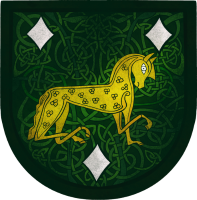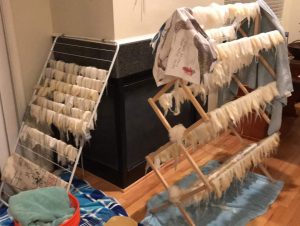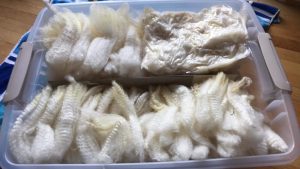Introduction
December 31, 2020 marked one year since I began the Great 2020 Dyeing Project Fade Test (which also had a small sidequest of the Madder Adventure), which meant it was time to take down the final fade swatches and process them! For the dyegoods, dyestuffs, dyeing combinations, fiber preparation, and dyeing methods that were involved in preparing for this year-long fade test, please see Part 1.
The final dates for the fade tests shifted only slightly from my original plan:
- One week: June 19 – June 26 (originally planned June 13 – June 20 or June 20 – June 27; I split the difference due to the weather around that time)
- One month: June 1 – June 30 (no shift)
- Three months: April 26 – July 26 (shifted by two days)
- Six months: March 16 – September 16 (shifted by one day)
- One year: January 1 – December 31 (no shift)
My test of the canary-stained wool (using yarn spun from the yellow tips versus yarn spun from the white roots) lasted three months. I also kept a control swatch of each color and material in a dark place. All the swatches were faded in a south-east facing window for their duration.


